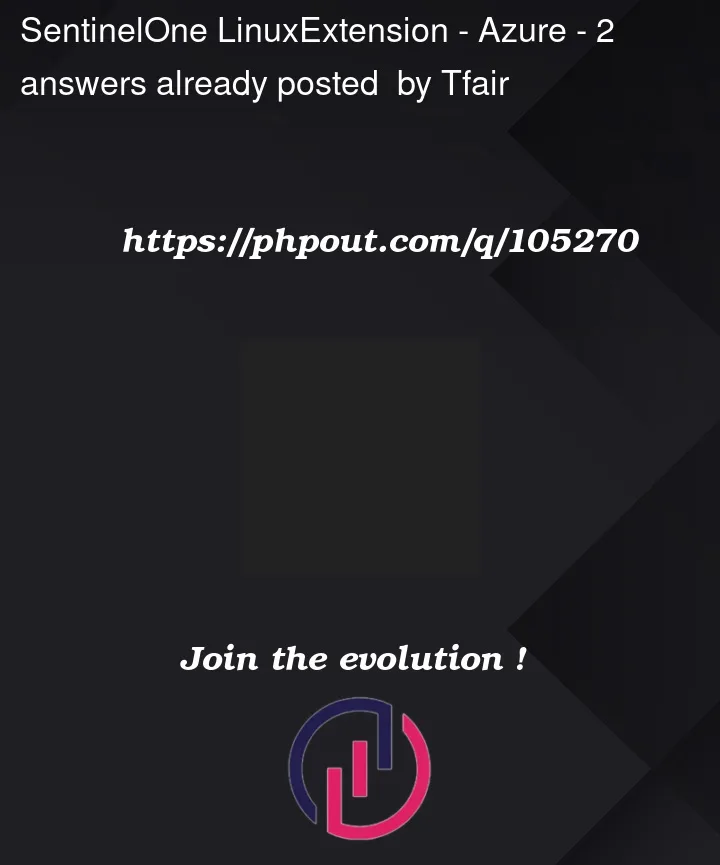I am currently looking to deploy the SentinelOne agent via Terraform. There does not appear to be much documentation online for VM extension usage in terms of Terraform. Has anyone successfully deployed the S1 agent via Terraform extension? I am unclear on what to add to the settings/protected_settings blocks. Any help is appreciated.
"azurerm_virtual_machine_extension" "example" {
name = "hostname"
virtual_machine_id = azurerm_virtual_machine.example.id
publisher = "SentinelOne.LinuxExtension"
type = "LinuxExtension"
type_handler_version = "1.0"




2
Answers
To add to the settings/protected settings blocks in terraform
Settings– The extension’s settings are provided as a string-encoded JSON object.protected settingsIn the same way that settings are supplied as a JSON object in a string, the protected settings passed to the extension are also.The keys in the
settingsandprotected settingsblocks must be case sensitive according to some VM Extensions. Make sure they are consistent with how Azure expects them (for example, the keys for the JsonADDomainExtension extension the keys are supposed to be in TitleCase)Reference: azurerm_virtual_machine_extension
Installing the plugin manually and checking the JSON output gives the following settings block:
Unfortunately, this leaves the one critical field required for installation out, since it’s a protected setting. That is the field name for the "Sentinel One Console API token".
UPDATE:
Working extension example after finding the correct JSON key value:
EDIT: Figured it out by once again manually installing the extension on another test system, and then digging into the waagent logs on that VM to see what value was being queried by the enable.sh script.